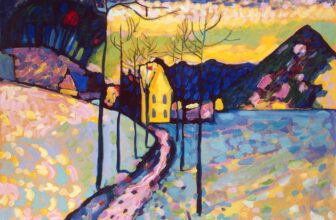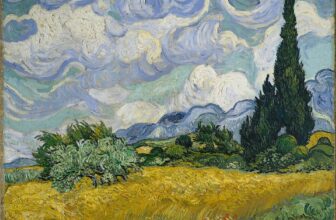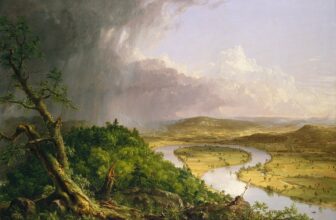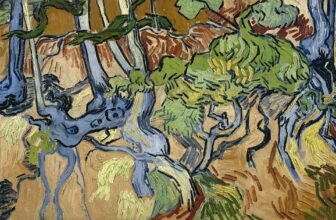
Egon Schiele: The Fire That Burned Too Bright
In the waning days of the Austro-Hungarian Empire, amid the moody cafés and opulent decay of Vienna, a young artist emerged who would shake the very foundations of European art. His name was Egon Schiele, and his work, raw, provocative, deeply psychological, would blaze briefly but indelibly across the canvas of history.
To speak of Schiele is to enter a world of tormented beauty, where the human form is stripped bare, vulnerability made visible, and taboos are confronted head-on. But who was this man behind the haunting figures and angular nudes? What drove him? What myths swirl around his short, brilliant life, and what truths can still be found in the brushstrokes he left behind?
What Is Egon Schiele Famous For?
Egon Schiele (1890–1918) is best known for his expressionist portraits and figurative works that dared to challenge societal norms and the polite aesthetics of his day. His art was confrontational, naked not just in form but in spirit. He was a master of capturing the psychological depth of his subjects, often painting them in contorted, uncomfortable poses that mirrored his own internal chaos.
He was also a student and protégé of Gustav Klimt, yet where Klimt’s sensuality was gilded and dreamlike, Schiele’s was stark and unflinching. His portraits, often of himself, lovers, and close acquaintances, explored themes of sexuality, mortality, and identity, long before these were popular topics in mainstream art.
Schiele created his own visual language: jagged lines, gaunt figures, and exaggerated hands and limbs that seemed to vibrate with emotion. His work was visceral, sometimes erotic, often disturbing, always compelling.
Was Egon Schiele a Feminist?
Schiele’s relationship with women, and how he portrayed them, has sparked debate for over a century. On the one hand, his art frequently objectifies the female body, portraying women in overtly sexual, even vulnerable, poses. On the other hand, his approach was radically honest and devoid of the male fantasy idealization so common at the time.
Some modern critics argue that Schiele was ahead of his time in acknowledging female sexuality. He painted women as sexual beings with agency, not just as muses or decorative subjects. His models were often friends, lovers, and sex workers, and he painted them without apology or euphemism.
However, it would be inaccurate to categorize Schiele as a feminist in the modern sense. His work was often about his own inner demons and desires, and women were primarily vehicles for exploring those themes. He did not advocate for women’s rights or equality per se, but his frank depictions contributed to breaking down Victorian taboos surrounding the female body.
Was Egon Schiele in Love With His Sister?
This is one of the most persistent and controversial rumors about Egon Schiele’s life. He was indeed very close to his younger sister, Gertrude (“Gerti”), and she posed for several of his early drawings. Their relationship was intense, and Schiele’s letters to her are filled with affection.
However, there is no conclusive evidence that their relationship was incestuous. The rumor seems to have been fueled by Schiele’s early fascination with taboo subjects, including the boundaries of familial love. In a society as conservative as early 20th-century Austria, even a close sibling bond combined with sexually charged art could easily provoke scandal and suspicion.
So, was he in love with his sister in a romantic or sexual sense? Probably not, but their bond was likely complex and formative, perhaps more emotionally entwined than most sibling relationships.
What Happened to Egon Schiele?
Tragically, Egon Schiele’s life was cut short by the Spanish flu pandemic of 1918, which swept through Europe at the end of World War I. He died on October 31, 1918, at the age of just 28.
Only days earlier, his beloved wife, Edith Harms, had also succumbed to the virus, while pregnant with their first child. Schiele sketched her on her deathbed, the final act of a man who had spent his life capturing fleeting moments of intensity and truth.
His death marked the end of what could have been an even more groundbreaking career. Despite his youth, Schiele left behind a body of work that spoke with the voice of someone far older, someone who had stared deeply into the void and lived to sketch what he saw there.
What Is the Largest Collection of Egon Schiele Paintings?
The Leopold Museum in Vienna, Austria houses the world’s largest collection of Egon Schiele’s works. This includes over 220 pieces, spanning oil paintings, drawings, and watercolors. The museum’s founder, Dr. Rudolf Leopold, began collecting Schiele’s works in the 1950s when his art was still considered scandalous and undervalued.
Today, the Leopold Museum is regarded as the spiritual home of Schiele’s legacy, drawing scholars and fans from across the world. It provides not only a chronological journey through his evolving style but also insight into his relationships, obsessions, and the socio-political backdrop of his art.
Did Egon Schiele Have Dystonia?
There is no historical or medical evidence to suggest that Egon Schiele suffered from dystonia, a neurological disorder characterized by involuntary muscle contractions and abnormal postures.
However, the question arises due to the contorted, almost grotesque poses of his figures. His nudes often twist unnaturally, fingers splayed, spines arched, expressions tense. These exaggerated gestures were artistic choices, not reflections of a medical condition.
Schiele was deeply interested in the human form, but not in a classical sense. He used the body as an expressive tool, distorting it to mirror inner psychological states rather than depict physical reality.
How Many Paintings Did Egon Schiele Make?
During his short life, Egon Schiele produced an astonishing number of works. Scholars estimate that he created around 300 oil paintings and over 2,500 drawings and watercolors.
He was obsessively prolific. His sketchbooks were never far from reach, and he drew constantly, friends, lovers, strangers, himself. His self-portraits alone number in the hundreds, offering one of the most raw and intimate chronologies of a human soul ever committed to paper.
Where Are Egon Schiele’s Paintings Today?
Besides the Leopold Museum, Schiele’s works can be found in major collections and museums worldwide. Some of the most notable include:
-
The Albertina Museum (Vienna) – Contains exquisite drawings and watercolors.
-
Neue Galerie (New York City) – Focuses on German and Austrian modern art.
-
The Museum of Modern Art (MoMA, NYC) – Holds some of his iconic self-portraits.
-
The Tate (London) and The Kunsthaus Zürich (Switzerland) – Also hold notable works.
-
Belvedere Museum (Vienna) – Has several important pieces, reflecting the Viennese Secession style.
His art has also been the subject of legal and ethical debates, especially regarding Nazi-looted art that changed hands under duress during World War II. Some of his works have been returned to heirs of Jewish families, reflecting ongoing efforts to reckon with the past.
What Type of Paint Did Egon Schiele Use?
Schiele primarily used oil paints for his canvas works, especially in his later years. His early works were often created using gouache, watercolor, and pencil or charcoal on paper, which allowed for rapid execution and emotional immediacy.
One hallmark of Schiele’s technique is his use of negative space. He would frequently leave the background untouched, allowing the pale paper or canvas to breathe around the figure. This served to highlight the intensity of the pose and expression, isolating the human form in a psychological vacuum.
His linework was bold, deliberate, and graphic, almost like an etching. Combined with vivid colors and expressive brushstrokes, this gave his work a tense, electric quality, as if his figures might leap off the page or crumple in agony at any moment.
The Legacy of Egon Schiele
Egon Schiele lived fast, painted furiously, and died young, leaving behind a body of work that continues to challenge, disturb, and inspire. In just over a decade, he transformed from a student of Klimt into a master of modern expressionism.
He was not an easy artist to love, nor was he trying to be. His work asks hard questions about desire, identity, mortality, and morality. He used the human body not as a vessel of beauty, but as a battlefield for existential truth.
Even now, more than a century after his death, Schiele’s influence can be seen in contemporary fashion, film, and visual art. His figures, so raw and haunted, remind us of our fragility, and our yearning to be seen for who we really are.
In the end, Schiele didn’t just paint bodies. He painted souls, and in doing so, immortalized a part of his own.





